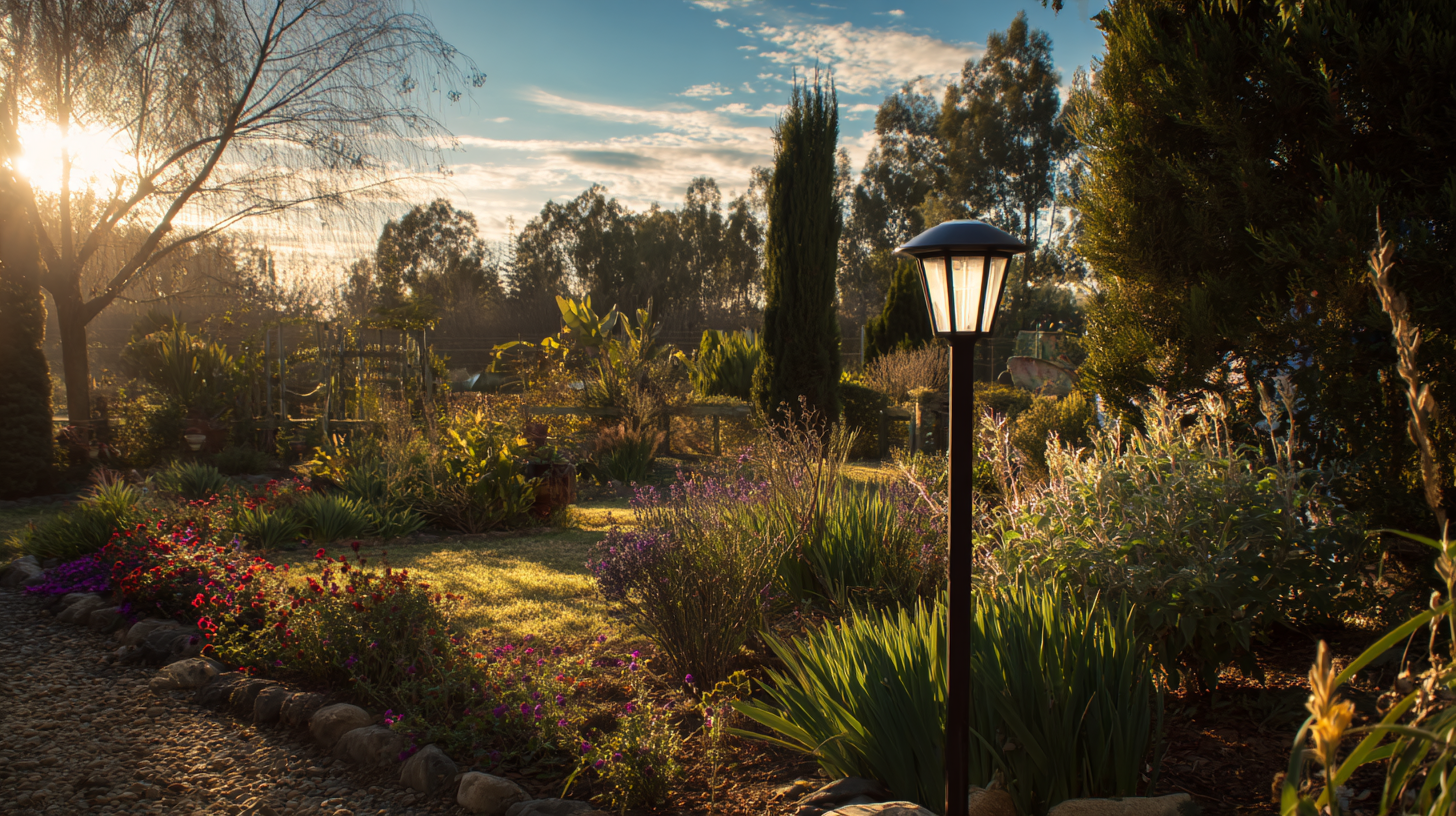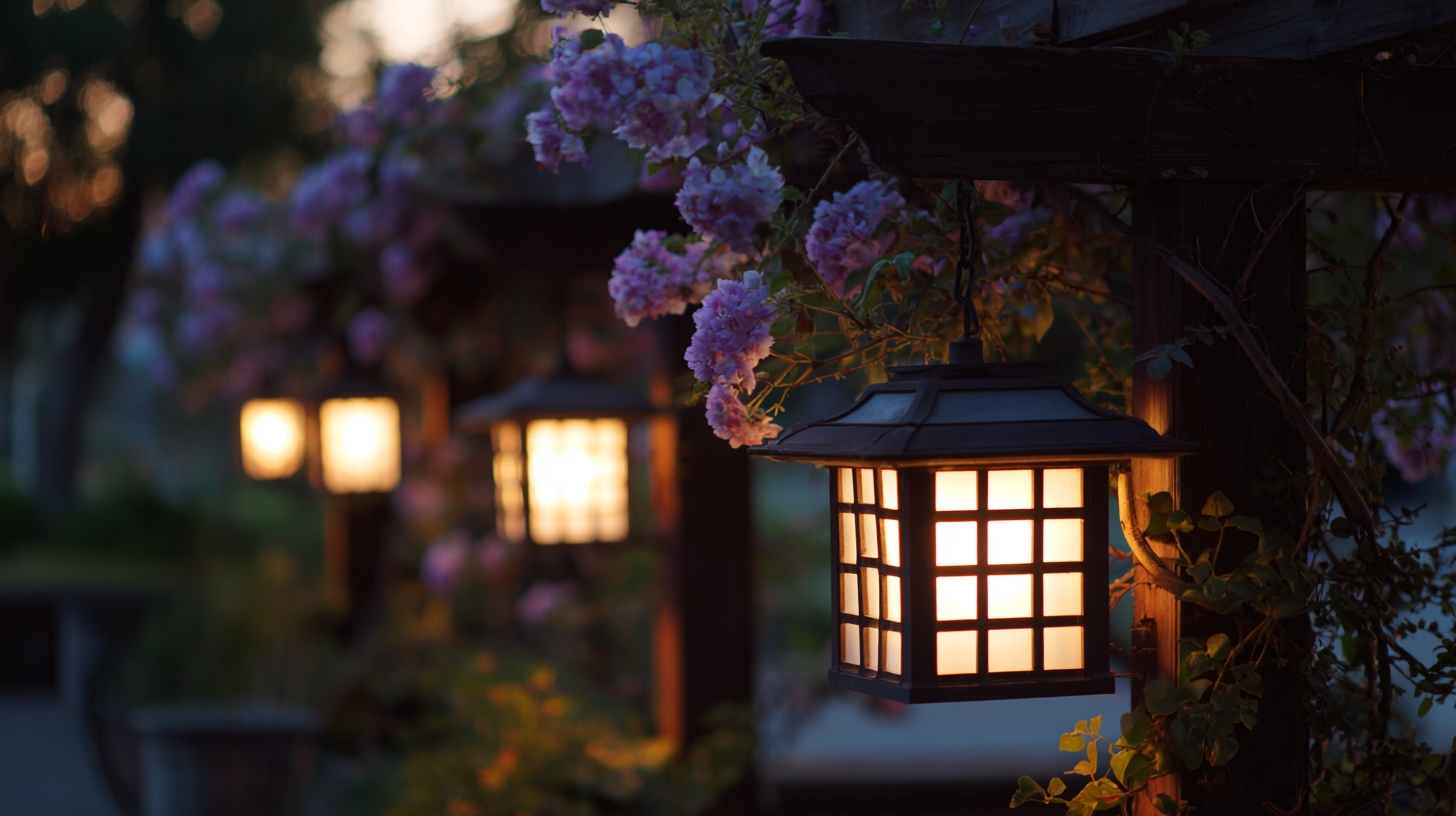The Comprehensive Handbook for Selecting the Best Solar Yard Lights for Global Buyers
As the global shift towards renewable energy sources accelerates, the demand for solar energy solutions is witnessing exponential growth. According to the International Renewable Energy Agency (IRENA), the solar energy sector is anticipated to expand by over 20% annually, highlighting an increasing consumer preference for sustainable options. Among these, Solar Yard Lights have emerged as an essential choice for homeowners and gardeners seeking to enhance outdoor spaces while reducing their carbon footprint. These lighting solutions not only offer energy savings but also contribute to lower electricity bills and environmental sustainability.

This comprehensive handbook aims to guide global buyers in selecting the best Solar Yard Lights by providing a detailed checklist that addresses key factors such as brightness, durability, design, and energy efficiency, ultimately enabling consumers to make informed decisions in this burgeoning market.
Understanding the Importance of Solar Yard Lights for Global Environments
 In today’s environmentally conscious world, solar yard lights serve as a crucial addition to outdoor spaces across the globe. These lights harness the sun's energy, providing an eco-friendly alternative to traditional lighting. From urban landscapes to rural settings, solar yard lights contribute significantly to reducing energy consumption and minimizing carbon footprints. As such, they play an essential role in global efforts to combat climate change while offering a sustainable solution for beautifying and illuminating external environments.
In today’s environmentally conscious world, solar yard lights serve as a crucial addition to outdoor spaces across the globe. These lights harness the sun's energy, providing an eco-friendly alternative to traditional lighting. From urban landscapes to rural settings, solar yard lights contribute significantly to reducing energy consumption and minimizing carbon footprints. As such, they play an essential role in global efforts to combat climate change while offering a sustainable solution for beautifying and illuminating external environments.
Understanding the importance of solar yard lights goes beyond their ecological benefits. They enhance safety and security by illuminating pathways, driveways, and gardens, reducing the risks of accidents and deterring potential intruders. Additionally, their versatility and ease of installation make them an attractive option for homeowners and businesses alike. No matter where you are in the world, integrating solar yard lights into your outdoor space not only elevates the aesthetics but also contributes positively to the environment and community well-being. By selecting the right solar lighting solutions, global buyers can ensure that their investment aligns with both their design preferences and sustainability goals.
Key Features to Consider When Choosing Solar Yard Lights
When selecting the best solar yard lights, there are several key features to consider that can enhance both functionality and aesthetic appeal. First, the brightness of the solar lights is crucial. Measured in lumens, it determines how effectively the lights illuminate your yard. A higher lumen count is suitable for areas needing bright lighting for safety, while lower counts may suffice for decorative purposes. Additionally, consider the color temperature of the light. Warmer tones create a cozy ambiance, while cooler tones can provide a more modern feel depending on your landscaping style.
Another critical factor is battery capacity and charging time. Efficient solar yard lights should have batteries that can hold charge for extended periods, especially during the night. Also, look for lights with a quick recharge time—ideally powered by high-quality solar panels that can harness sunlight effectively even on cloudy days. Lastly, pay attention to durability features. Waterproof and weather-resistant designs ensure that your solar lights can withstand harsh outdoor conditions, thereby enhancing their longevity and performance throughout the seasons.
The Comprehensive Handbook for Selecting the Best Solar Yard Lights for Global Buyers
| Feature | Description | Importance |
|---|---|---|
| Brightness (Lumens) | Measures the amount of light emitted. Higher lumens mean brighter lights. | Essential for visibility and security. |
| Solar Panel Efficiency | Indicates how well the solar panel converts sunlight into electricity. | Crucial for performance in varying weather conditions. |
| Battery Capacity | The amount of energy stored to power the light when the sun isn't shining. | Determines how long lights will remain illuminated after dark. |
| Durability | Resistance to weather elements and physical impacts. | Important for long-term outdoor use. |
| Motion Sensor | Detects motion to turn on lights, enhancing security and saving energy. | Highly beneficial for security-focused installations. |
| Light Color Temperature | The color appearance of the light, which can range from warm yellow to cool blue. | Affects ambiance and aesthetics of outdoor spaces. |
| Installation Ease | How simple it is to set up the lights without professional help. | Convenient for DIY enthusiasts. |
| Warranty Period | Time duration during which the product is covered against defects. | Reflects the manufacturer's confidence in their product. |
A Comparative Look at Different Solar Yard Light Materials and Designs
When choosing solar yard lights, the material and design play a crucial role in both functionality and aesthetics. According to a report by the Solar Energy Industries Association (SEIA), the adoption of solar lighting has surged by over 30% annually, driven largely by advancements in technology and material science. Common materials for solar lights include plastic, aluminum, and stainless steel. While plastic is lightweight and resistant to corrosion, aluminum offers enhanced durability and a sleek appearance. Conversely, stainless steel, though more expensive, provides superior strength and can withstand harsher weather conditions.
Design is equally important in optimizing the performance of solar lights. Traditional designs often feature a simple pole and lantern setup, while modern variations incorporate decorative elements and energy-efficient LED lighting. A study from Grand View Research notes that the LED solar light market is expected to grow significantly, attributed to a rising preference for sustainable, energy-efficient solutions. Aesthetic considerations, such as color temperature and lumens output, are essential for enhancing outdoor spaces, making the selection process not only about utility but also about complementing existing landscapes.
The Comprehensive Handbook for Selecting the Best Solar Yard Lights
The Role of Chinese Manufacturing in the Global Solar Light Market
Chinese manufacturing has significantly shaped the global solar light market, positioning itself as a key player in providing affordable and innovative solutions. With a robust supply chain and advanced production capabilities, China has become a go-to source for a variety of solar yard lights. The country's manufacturers leverage economies of scale, allowing them to produce high-quality products at competitive prices, which meets the growing demand from international buyers seeking sustainable outdoor lighting options.
Moreover, Chinese companies are at the forefront of technological advancements in solar energy. By investing heavily in research and development, they are continuously improving the efficiency and durability of solar lights. This commitment to innovation not only helps in producing brighter and longer-lasting lights but also boosts the global market's overall quality standards. As more consumers and businesses prioritize environmental sustainability, the influence of Chinese manufacturing in the solar light sector will likely expand, driving both market trends and consumer preferences worldwide.
Tips for Maintaining and Optimizing Solar Yard Lights for Longevity
Maintaining and optimizing solar yard lights is crucial for enhancing their longevity and ensuring that they provide reliable illumination throughout their lifespan. According to a report by the U.S. Department of Energy, improperly maintained solar lights can lose up to 50% of their performance due to factors such as battery degradation and dirt accumulation on solar panels. Regularly cleaning the solar panels—using a damp cloth to remove dust and debris—can significantly improve their efficiency, potentially increasing light output by 20% or more.
In addition to cleanliness, the proper care of batteries is essential. Most solar lights use nickel-cadmium (NiCd) or lithium-ion batteries. Research indicates that frequent deep discharges can diminish battery life, sometimes by as much as 30%. To optimize performance, it's recommended to periodically allow the batteries to fully discharge before recharging them, particularly in the early stages of use. Employing newer solar technologies that include smart charging systems can further enhance battery longevity and ensure that your solar yard lights consistently operate at peak efficiency.

